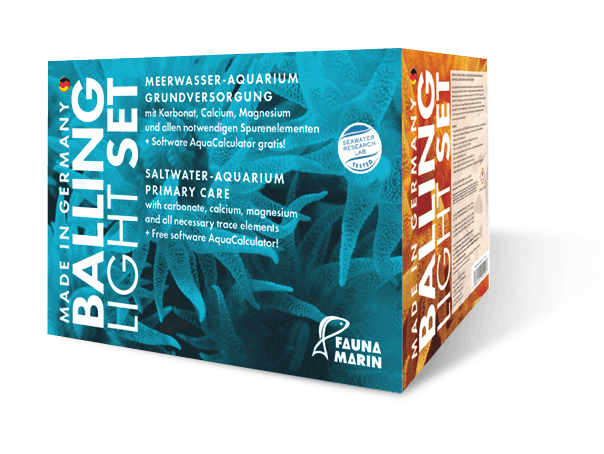Chromium
Chromium is an essential trace element, but is toxic in high concentrations. Chromium accumulates in the aquarium and then has a toxic effect. In nature, chromium is enriched by some corals in the skeleton. In the coral it is used to form enzymes for the fat metabolism in the tissue cells.
Chromium is found in reef aquariums as chromate and gets into the water via cement-containing adhesives or decoration articles as well as some trace element solutions. Feeding Artemia as frozen food can also be a source of too high a chromium value.
Too high value:
Partial water change, removal of decoration, filtering via Phos.
Too low a value:
No individual dosing intended!
| Variety | Heavy metal |
|---|---|
| Reference value | 0 µg/l (0,26 US.liq.gal.) |
| Skill Level | Red, only for experienced aquarists |
| Source | salt, cement, plastics |
| Available | no direct dosing intended, system-dependent dosage is given |
| Importance 1–6 | 3 |
| Detection quality | safe |

Balling Light:
No dosing required. Please note the relevance limit in the ICP analysis.
Whether a chromium value can become a problem depends largely on the compound. Most chromium compounds are not soluble in water and therefore tend to be particulate. Soluble chromium compounds originate from the sources already mentioned, and the toxicity in seawater is usually not very high due to the high content of carbonates and PO₄³⁻.
However, chromium compounds are necessary in a concentration between 0.1–0.3 µg/l (0,26 US.liq.gal.), but they can also be supplied via the feed. In the Fauna Marin Systems, the dosing of chromium is provided for by the system and is done in sufficient quantities. However, the required quantity is below the detection limits of laboratory machines. This means that a zero value does not necessarily indicate a deficiency. The chromium value is therefore only meaningful in order to detect an increased concentration.
A chromium limitation is extremely rare, and a separate dosage is only required in exceptional cases. In the case of high nutrient values, iron and manganese as well as other metal compounds are increasingly bound to chromium, and in such a case an individual dosage may be advisable. But before dosing chromium, always make sure to cary out an analysis and consultation.
Too low chromium values lead to slow growth and low response to the food offered. Chromium plays an important role in the absorption and use of fatty acids in corals. We have not yet encountered a real limitation, and other causes that trigger a similar picture can be considered first.